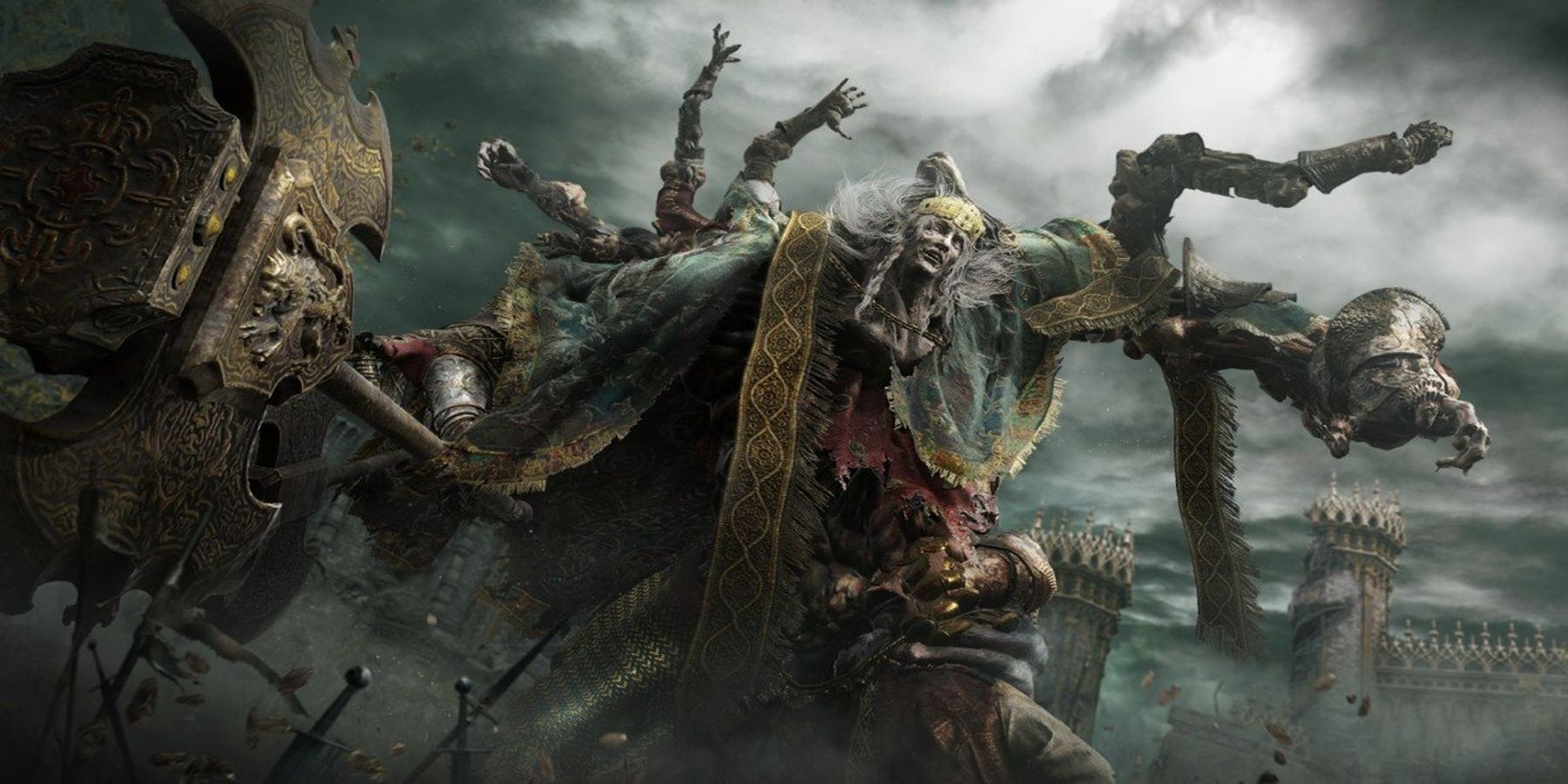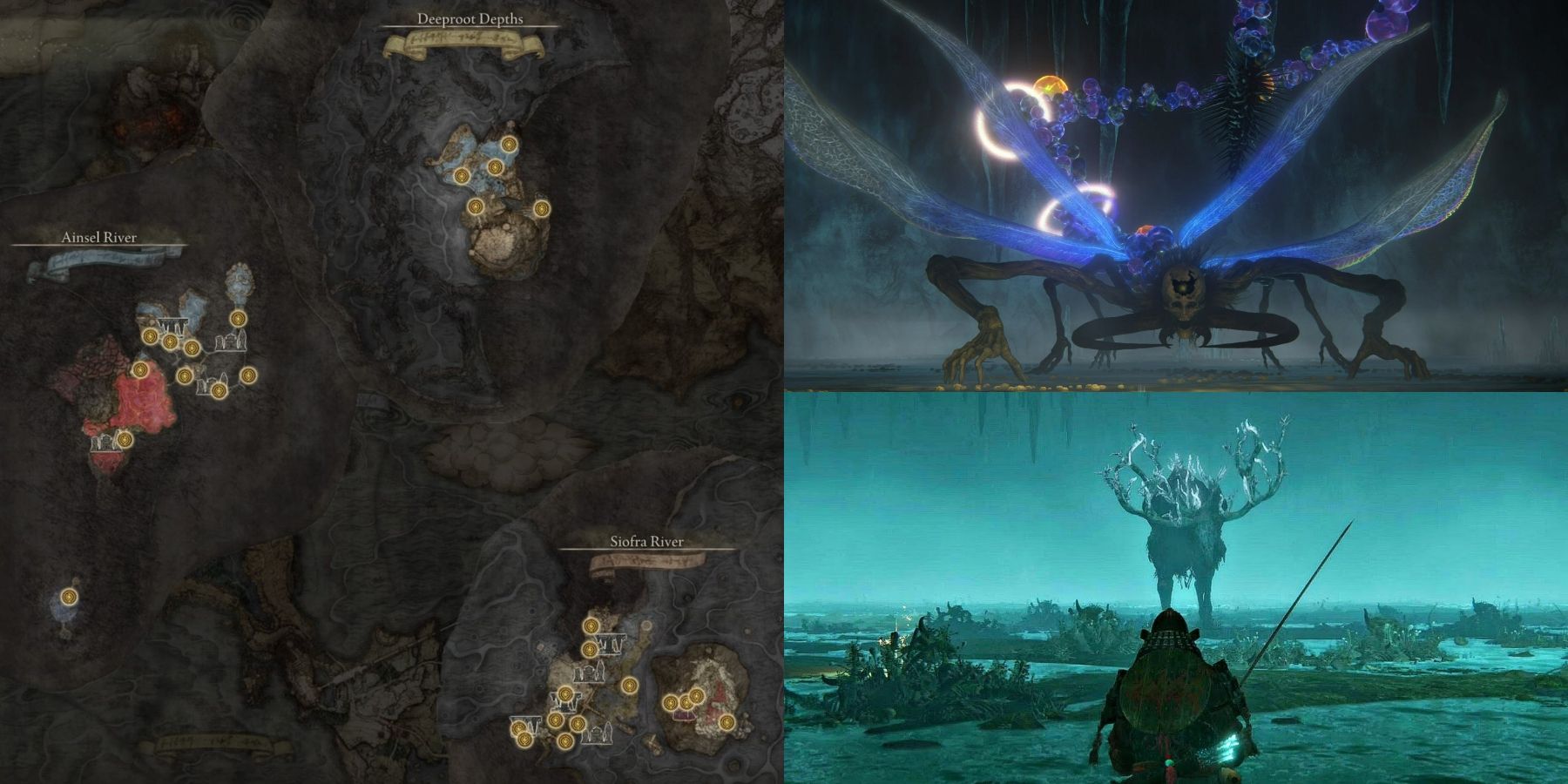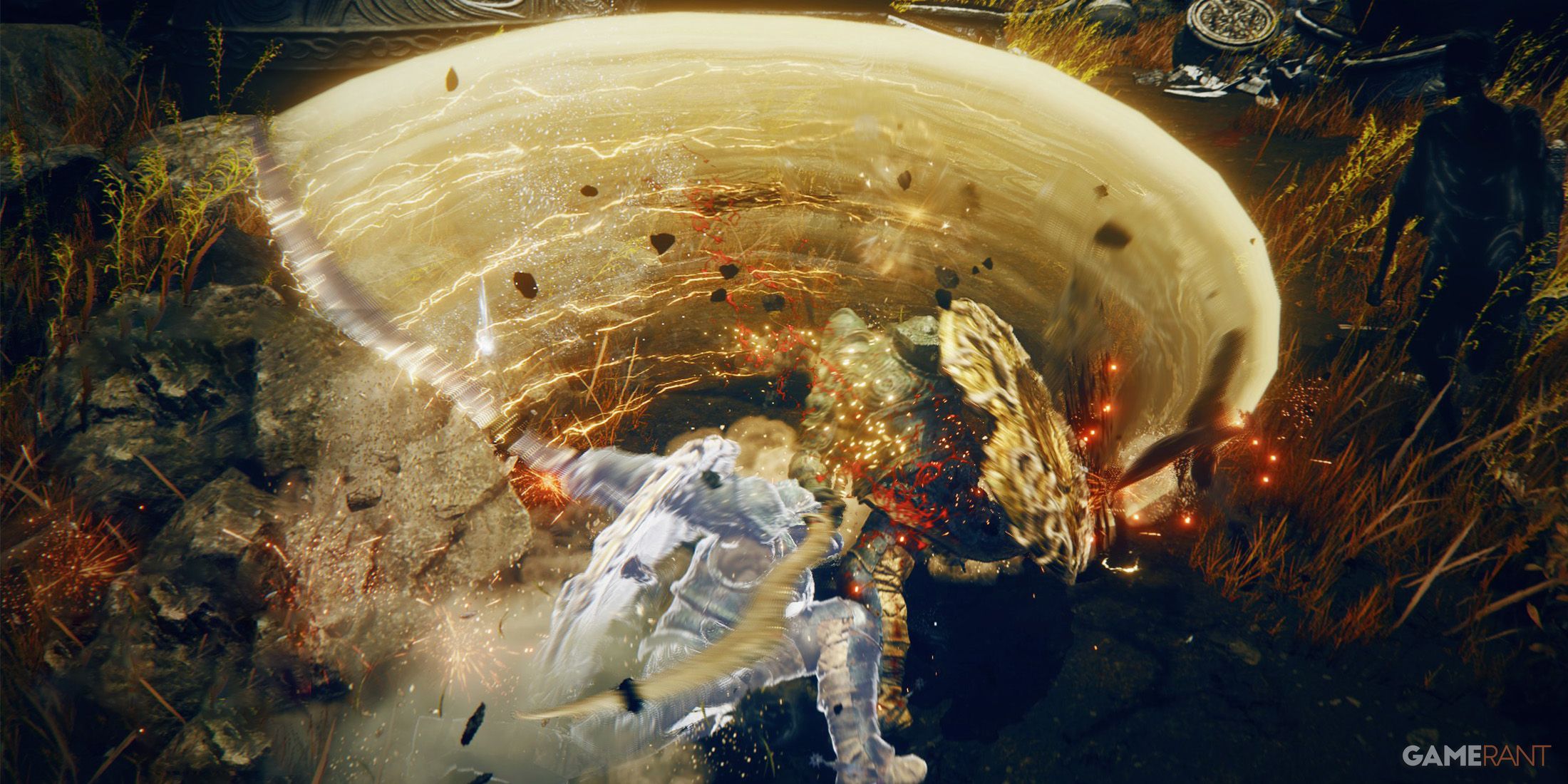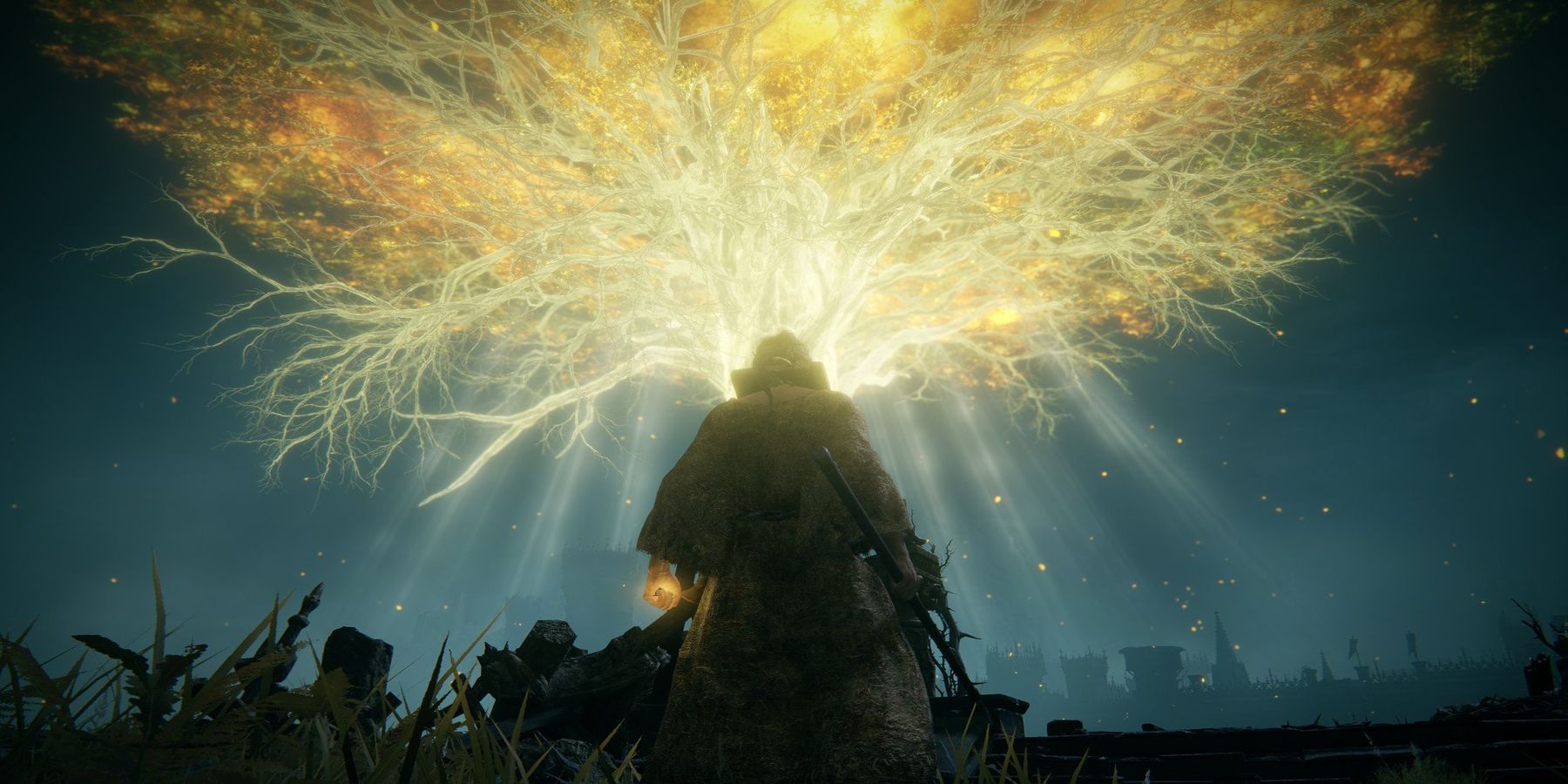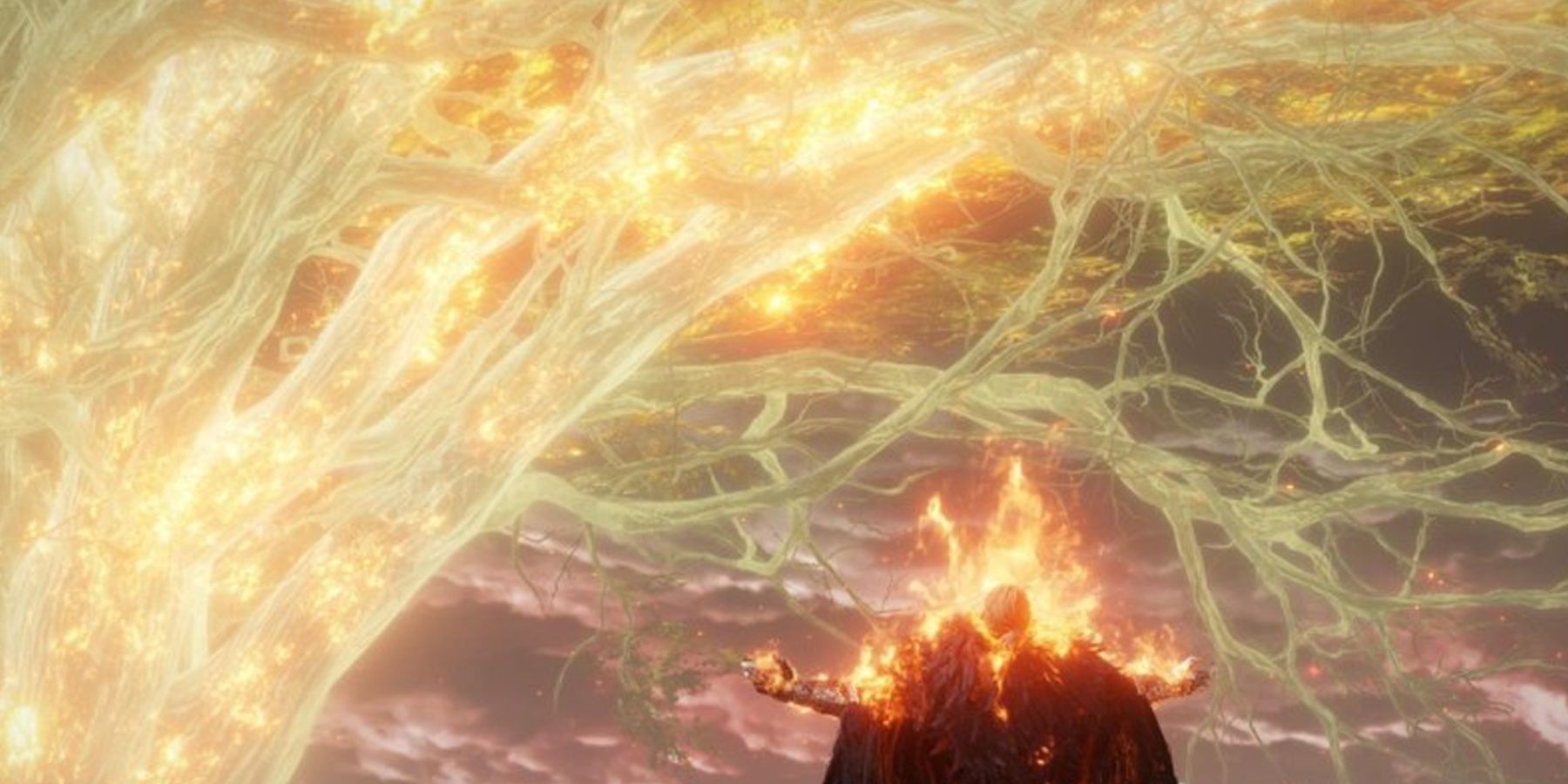Captivating lore development is essential to the performance of RPGs, and Elden Ring more than exceeded this requirement, with the game packed full of intriguing characters with deeper backstories than what meets the eye. Few games have captured an audience in the manner Elden Ring dominated upon its release, due to its otherworldly gaming mechanics and excellent storytelling. From its most nefarious foe in Melania to the domineering Erdtree, each element in The Lands Between has a lore-rich background that ties into the main plot beautifully, and it can be a challenge to connect the tiny details expertly weaved by FromSoftware. The Erdtree, for instance, which has become one of the premier landmarks in the gaming scene, has a history of darkness hidden behind the curtain of its mountainous majesty.
Players can't miss the Erdtree in Elden Ring, visible from every corner of the map and standing tall over The Lands Between as a reminder of the supremacy of the Golden Order. All that glitters, however, is not gold, and the Erdtree's true sinister nature is hidden behind that brilliant golden glow. There are hints of links between the tree and the Old Gods throughout Elden Ring's gameplay, and there are many surprising secrets about the Erdtree to discover once players investigate its origins.
The Erdtree's Parasitic Nature is Harming The Lands Between
The Root Resin item informs players of the Great Tree from a time before the Erdtree came to be, which housed the primordial Crucible that was the primary source of life in The Lands Between. It is insinuated that the Erdtree somehow fused with its predecessor by placing the Elden Ring's influence on the Crucible, giving some parts a more natural look instead of the customary ethereal glow. The transition to the Erdtree wasn't smooth sailing for the realm's inhabitants, as multiple wars of conquest were fought to bend all cultures to the new symbol of order.
Like much of FromSoftware's titles, death is the order of the day in Elden Ring, and the Erdtree plays a fundamental role in the game's burial rituals. Coming to relevance after Marika's establishment of the Golden Order, the tree replaced older traditions of Death Rite Birds incinerating the dead and Ancestral Worship. Every soul that dies in Elden Ring, except for groups such as Merchants and the Tarnished, have their spirits returned to the Erdtree via the numerous catacombs according to the philosophy of Destined Death. The Erdtree is a parasite that feeds off dead souls - and so is the Greater Will, by extension.
Further adding to the Erdtree's parasitic nature is the corpse of Godwyn, the demigod son of Marika and the first Elden Lord. After his murder during the Night of The Black Knives, his body was laid to rest at the roots of the Erdtree under Leyndell's capital. Due to the interconnected nature of the tree's roots, his corpse starts infecting the rest of the realm, steadily gaining influence in The Lands Between. The Erdtree's leaching of the land and ultimate purpose eventually causes Marika to turn her back on the Outer Gods, shattering the Elden Ring in rebellion and leaving the tree vulnerable.
Golden Seeds spread across The Lands Between because of the Shattering, propagating in some locations and forming Minor Erdtrees, which hold small fragments of the main tree's power. These manifest in Elden Ring as the tears used in the Wondrous Physick and are guarded closely by the Erdtree Avatars. Marika's actions effectively kickstart the downfall of the Golden Order, as the Erdtree can no longer clothe the world in its golden aura of Grace. Elden Ring players hold the world's fate in their hands at the end of the game, as they can preserve the Greater Will's Order or set the Erdtree ablaze, freeing the realm from the shackles of the parasitic tree.
Elden Ring is available for PC, PlayStation 4, PlayStation 5, Xbox One, and Series X/S.

